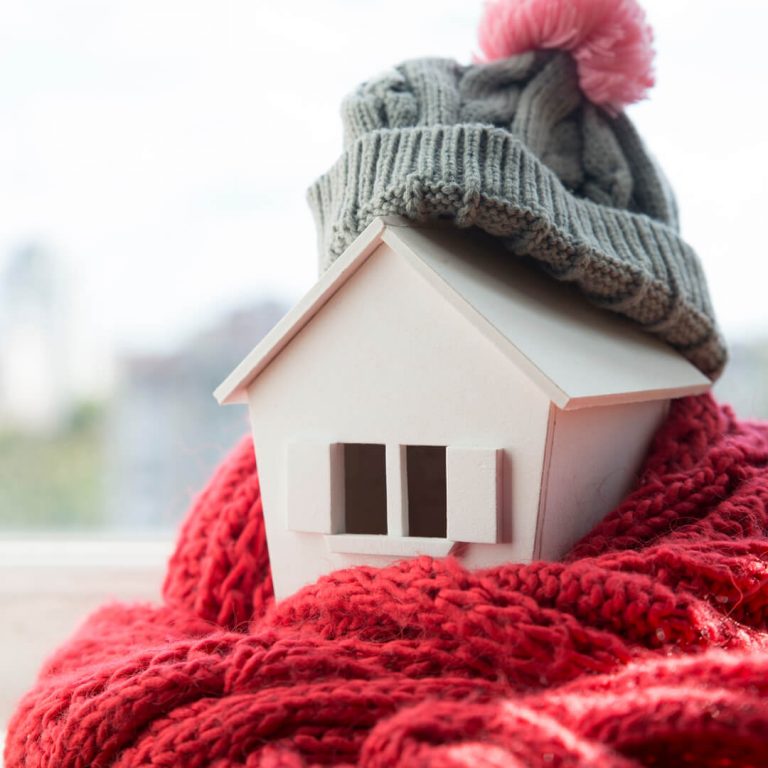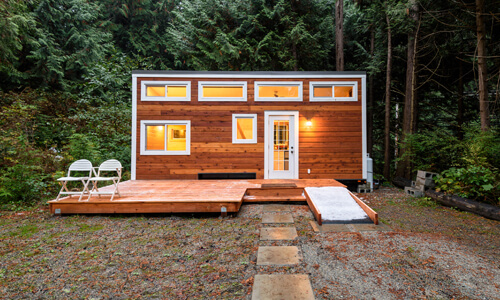The colder temperatures are here, and that means you’re putting on extra layers and turning up the thermostat to stay warm.
But winter bills don’t have to bury your monthly budget. By following some easy, free or inexpensive tips, you’ll save energy—and money—when the temperature drops.
Assess Your Energy Usage
An energy audit is a good first step to determine ways to save money on heating costs. It will let you know where your home is deficient and ways to save costs on energy in the long term.
You can hire a professional energy auditor who will review your energy bills with you, and then go through your home, room by room, using tools such as infrared cameras, efficiency meters, blower doors and surface thermometers. Locate an energy auditor, also called a rater, through one of these certification agencies: RESNET (Residential Energy Services Network) or BPI (Building Performance Institute).
The cost to have a professional conduct the audit ranges from about $200 to $600 and depends on factors such as your location and the size of your home. If that’s out of your price range, you can perform a do-it-yourself inspection by concentrating on finding drafty spots, also known as air leaks.
Reduce Your Home’s Air Leaks
Air leaks are commonly found (in both old and new homes) in gaps at the baseboards, windows and doors, as well as light and plumbing fixtures, and electrical outlets and switches. Sealing these leaks can save up to 20% annually on total household energy bills, according to the U.S. Department of Energy.
To reduce a draft, caulking and weather stripping are good DIY measures to take, as are window coverings or a heavy-duty, clear plastic sheet taped to a window frame. The plastic sheets are especially good for basement or attic windows—low-traffic areas where the sheets won’t be jostled by everyday activity or seen as an eyesore in the dining room, for example.
Insulating your attic will help to keep the warmth inside, as will keeping your fireplace damper closed until you start a fire. An open damper allows the warm air to escape through the chimney.
Take Energy-Saving Steps
The cost to heat your home is about 42% of your utility bill, according to the Department of Energy. There are ways to trim that expense, though.
Even if there’s a layer of snow on the ground, the sun can be bright enough to help warm your house. In the daytime, open the blinds or curtains—especially on the south-facing windows—to let the sunlight in. Be sure to close them at night.
It’s a good move to have your furnace serviced—preferably before winter, but any time during the season is beneficial. A well-tuned furnace runs more efficiently, and the technician is more likely to discover any issues that could turn into big, expensive problems down the road. By addressing it now, you’ll save the cost of an emergency service and keep the heat working through the season.
Once your system is in tip-top shape, be sure to change the air filter monthly. A dirty filter makes it harder for air to move and causes your furnace to work—and cost—more.
When you are at home, set your thermostat to the lowest temperature you can and still be comfortable. If you and your family members or roommates disagree on that number and you’re still cold, it’s time to pull your old college sweatshirt from the back of the closet and put on those warm socks.
When you go to work or go to sleep, setting back the thermostat by 10 to 15 degrees for those eight hours can save on your heating bills. If you don’t have a programmable thermostat, installing one can help you save about $180 a year. A programmable thermostat starts at about $25 for a basic model, while more sophisticated systems that can be controlled remotely by your smartphone can cost about $170.
Don’t Forget About Your Fans
We think of fans as hot weather essentials, but they play a role in fall and winter energy efficiency, too.
A hot shower is a way up to warm up, but the resulting steam in the bathroom can affect the heat in your home. If you turn on the bathroom fan to clear the steam, the fan will suck your warm air from your furnace out with the steam. The easy alternative is to shower with the bathroom door open to let the steam dissipate.
Also remember that your ceiling fans aren’t just for summer. Since heat rises, it will be trapped at your ceiling. By turning on the fan and flipping it to reverse, you’ll send the heat back down to the floor level.
LED Lighting for the Winter
Shorter days in the fall and winter mean an increased need to turn on the lights in your home.
You have more light bulbs in your home than you realize. Four in a ceiling fan. Three in the bathroom fixture. One each in the 10 or so overhead lights in your hallways. And then there are the bulbs in the lamps in your living areas and bedrooms.
Using one traditional 60-watt incandescent lightbulb over a 23-year period will cost $201 for the bulbs and power used. A similar LED bulb? $38. Over 23 years, you’ll save more than $160. Per bulb!
It also pays to switch to LED holiday lights for your tree and outdoor decorations. The Department of Energy looked at the costs to light a 6-foot tree 12 hours a day for 40 days and found that with traditional mini-lights, the cost is $2.74. With LED mini-bulbs, it’s 82 cents. It may not seem like a big deal, but a strand of LED lights can last 40 years. The life span for non-LED holiday lights is a mere three years.
Following these tips can reduce your fall and winter energy costs. Investments in things such as a programmable thermostat and light bulbs are small and will pay a big return down the road.







Comments Section
Please note: Comments are not monitored for member servicing inquiries and will not be published. If you have a question or comment about a Quorum product or account, please visit quorumfcu.org to submit a query with our Member Service Team. Thank you.